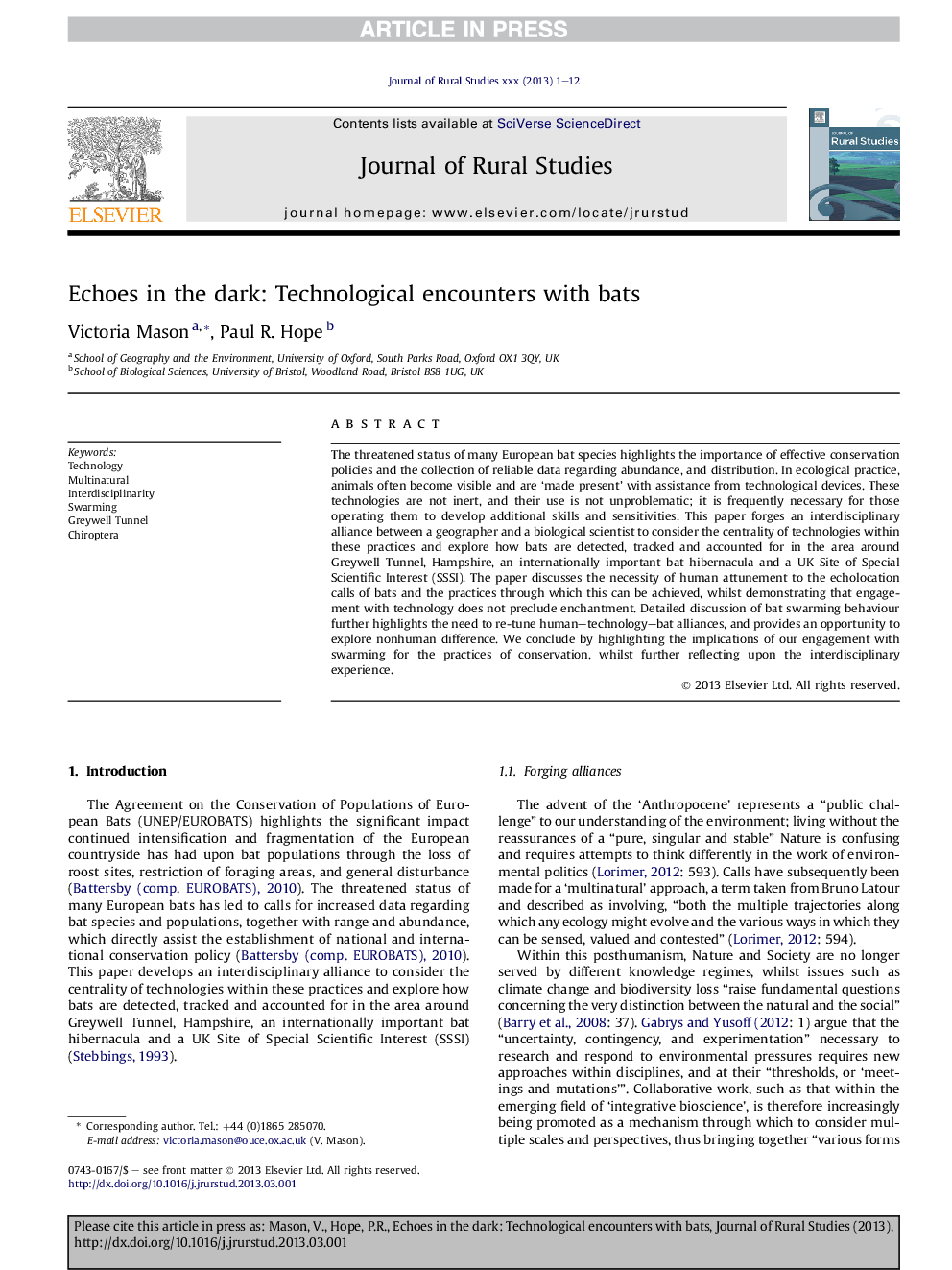| Article ID | Journal | Published Year | Pages | File Type |
|---|---|---|---|---|
| 6545870 | Journal of Rural Studies | 2014 | 12 Pages |
Abstract
The threatened status of many European bat species highlights the importance of effective conservation policies and the collection of reliable data regarding abundance, and distribution. In ecological practice, animals often become visible and are 'made present' with assistance from technological devices. These technologies are not inert, and their use is not unproblematic; it is frequently necessary for those operating them to develop additional skills and sensitivities. This paper forges an interdisciplinary alliance between a geographer and a biological scientist to consider the centrality of technologies within these practices and explore how bats are detected, tracked and accounted for in the area around Greywell Tunnel, Hampshire, an internationally important bat hibernacula and a UK Site of Special Scientific Interest (SSSI). The paper discusses the necessity of human attunement to the echolocation calls of bats and the practices through which this can be achieved, whilst demonstrating that engagement with technology does not preclude enchantment. Detailed discussion of bat swarming behaviour further highlights the need to re-tune human-technology-bat alliances, and provides an opportunity to explore nonhuman difference. We conclude by highlighting the implications of our engagement with swarming for the practices of conservation, whilst further reflecting upon the interdisciplinary experience.
Related Topics
Life Sciences
Agricultural and Biological Sciences
Forestry
Authors
Victoria Mason, Paul R. Hope,
